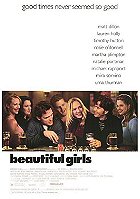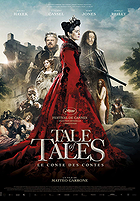Just in time for Blondie’s 2006 induction into the Rock and Roll Hall of Fame came this combo release: one disc of greatest hits, one disc of music videos. Yet there’s a pervading sense of wheel spinning here. Other compilation albums have managed the neat trick of feeling complete, but this one suffers from glaring omissions and unnecessary changes.
The 2002 Greatest Hits collection remains the single best one-disc collection of Blondie’s crown jewels, even if the random order of the songs proves mildly vexing. At nineteen songs there’s nary a missing major single, fan favorite, and it came wrapped up in remastered sound and official approval from the band. This version’s physical disc drops both “X Offender” and “(I’m Always Touched by Your) Presence, Dear,” and later digital versions drop “Maria” and “Rapture Riders.” That last omission isn’t so bad, to be fair, but it’s an interesting sonic curio.
Greatest Hits: Sound & Vision becomes a curious little thing. Splitting the difference between random order and chronological, the track listing drops the biggest hits (“Heart of Glass,” “Call Me,” “Rapture”) at the front before switching to chronological order near the midpoint, a remix of “In the Flesh.” I’m not sure why “In the Flesh” was remixed by Super Buddha, a producing team that Debbie Harry was quite fond of at the time as they were also behind her album Necessary Evil.
There’s also the very real danger of Parallel Lines imploding as nearly every song from that essential album is reflected here. While this is supposed to reflect the best of Blondie, leaning so heavily on one album, even if it is their best one, doesn’t leave enough room for the other albums to shine. I’d trade a few of those album-only songs for the likes of “Detroit 442” and “The Hardest Part,” lesser-known singles that deserve prominence when collecting a comprehensive career overview.
No new material was recorded for this, but newer songs like “Good Boys” and “End to End” get written into Blondie’s history in a more prevalent way than The Curse of Blondie afforded. The “Good Boys” remix diminishes that song’s original burbling disco-rock rhythms for something stranger, but still keeps the personality of it intact. While “End to End,” much like the here then gone “Maria,” sounds like a modern-day Blondie song should: Harry’s rock goddess persona riding over crunchy guitars and layers of keyboards.
And Greatest Hits: Sound & Vision nearly manages the hat trick of being a comprehensive overview of the band’s career to this point. If you’re looking for a single-disc collection of Blondie’s pop smarts and chilly New Wave glamour, you could do worse. There’s no shortage of Blondie compilations on the market, but that also means there’s better, bigger ones out there just primed for discovery.
At least there’s the Vision half of the title to valiantly try and tip the scales. Seventeen primitive music videos that find Harry looking too bored to live and generating an impressive erotic charge. Their power pop was mighty, and they had some absurd and brilliant visuals to go right along with it, like the trash bag chic of “Atomic” and sci-fi dopiness of “The Tide is High.”
DOWNLOAD: “Good Boys (Blow-Up Remix),” “In the Flesh (Remix),” “Rapture Riders”
 Login
Login
 Home
Home 95 Lists
95 Lists 1531 Reviews
1531 Reviews Collections
Collections
 0 comments,
0 comments, 







